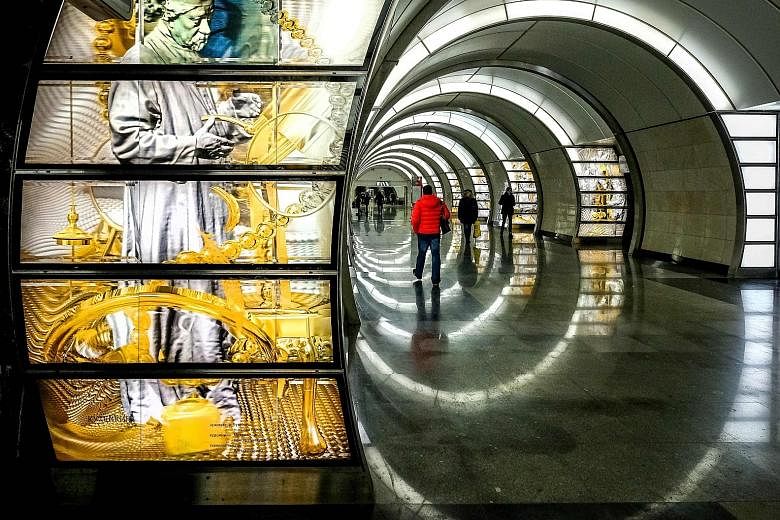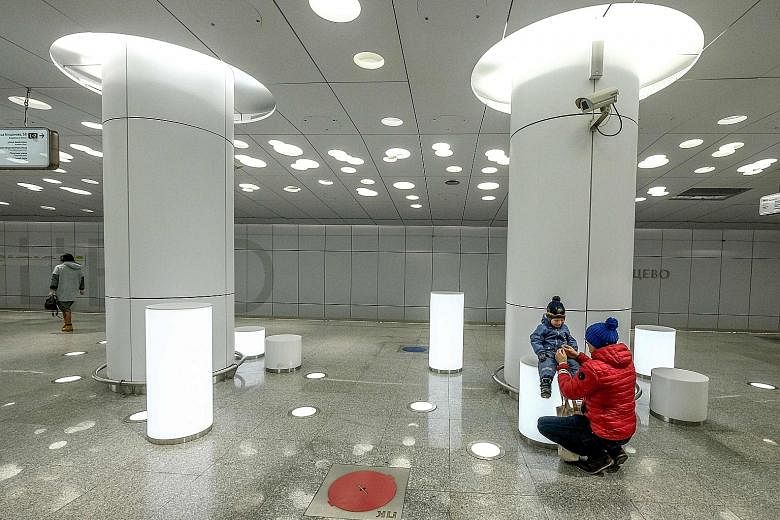MOSCOW • Moscow's metro system is riding a new design train.
Famed for its Stalin-era stations with glittering chandeliers and mosaics, the network is undergoing a massive expansion and architects are taking a radical new approach.
While the original stations were conceived as "palaces for the people", the new designs are less formal with light boxes for seats and laser-printed glass patterns.
In a major break with tradition, the Moscow city government has allowed independent architects to submit designs for several new stations in competitions that included a public vote on a phone app.
It has paved the way for "truly interesting and original stations that are outside any tradition", said architecture journalist Nina Frolova.
The first of these to open is in the high-rise suburb of Solntsevo, once notorious for its local mafia.
Moscow's Nefa Architects won with a design inspired by the sun. "We wanted to let the sun inside," said Nefa's lead architect Dmitry Ovcharov.
Holes were punched in the walls of the station entrances to "create light and shadow", he added.
Down on the platform, cylindrical white light boxes serve as seats.
Last year, the transport system, which dates back to 1935, opened 16 new stations and carried around two billion passengers.
Ms Frolova, editorial director at the Archi.ru architecture website, said Solntsevo is a bright example of new metro trends.
"There's a concept that any passenger can see. It feels pleasant being in the station."
Another architect with a winning station design, Ms Tatiana Leontieva of Moscow's Blank Architects, said the prestige of the commission was a draw. She was part of a team who designed a station called Rzhevskaya, which will have an "archway" theme in a nod to its location near a mainline railway station.
The brief was to create a station for "the new times", she said, using Russian materials and "without excessive decoration".
"There was a large number of applications and (the competition) had a big impact, not just on the Russian architectural scene but abroad too because a lot of people wanted to get their hands on a site like the Moscow metro."
The historic Moscow metro was a monumental construction in the 1930s, built as an example of quality and solidity, symbolising the grandeur of leader Josef Stalin and the young Soviet Union.
The country's history was told in the mosaics that adorned the stations' walls and the metro could serve as a bunker if needed.
Previously, state company Metrogiprotrans had a monopoly on the transport system's architecture and it still designs the majority of new stations. But it is also modernising.
The company's latest station interiors feature laser-printed designs on glass or glossy aluminium panels - a simple approach that Ms Frolova said also works. "I think they kept a good balance with not many details and some simple, modern forms."
AGENCE FRANCE-PRESSE


